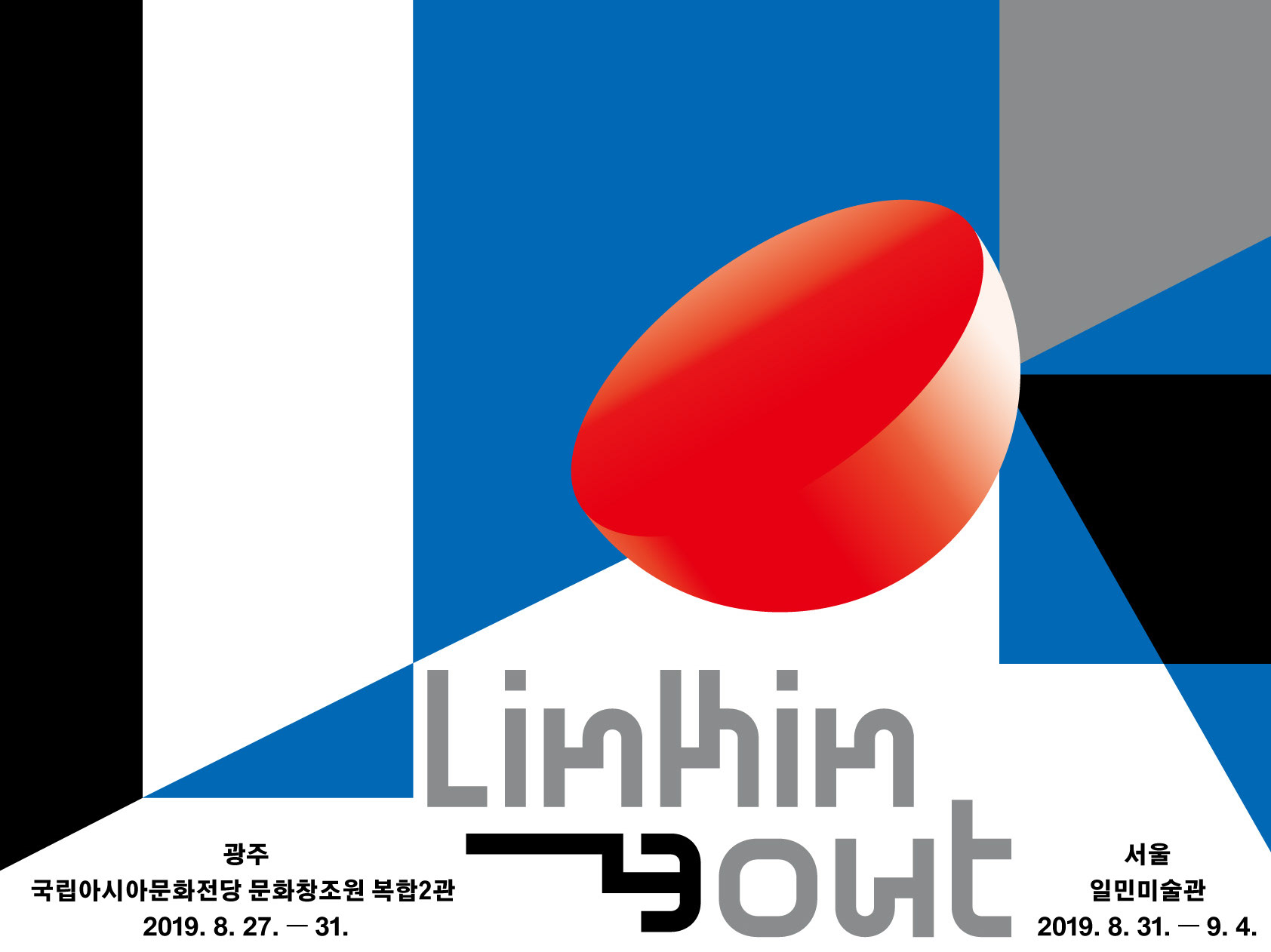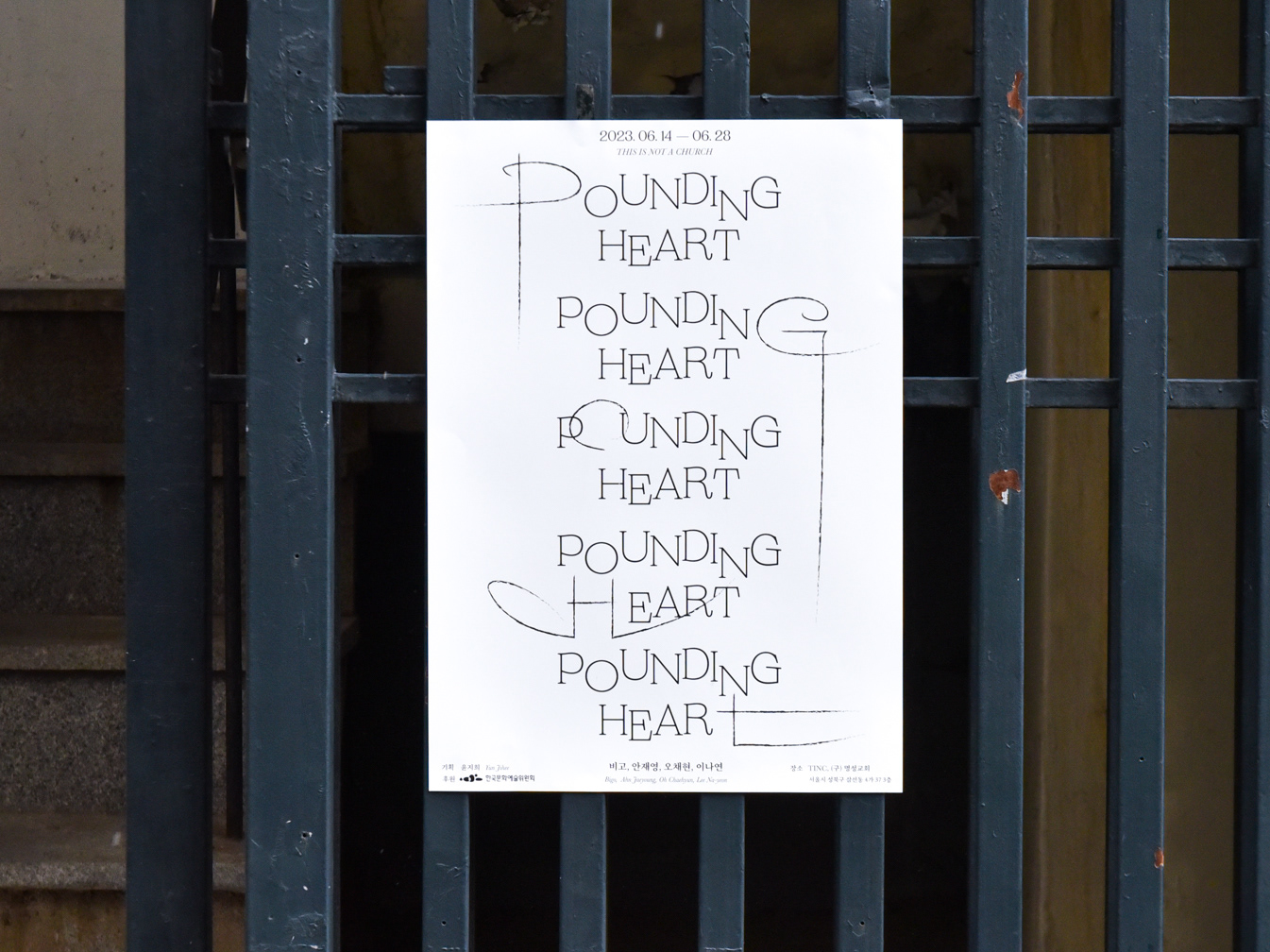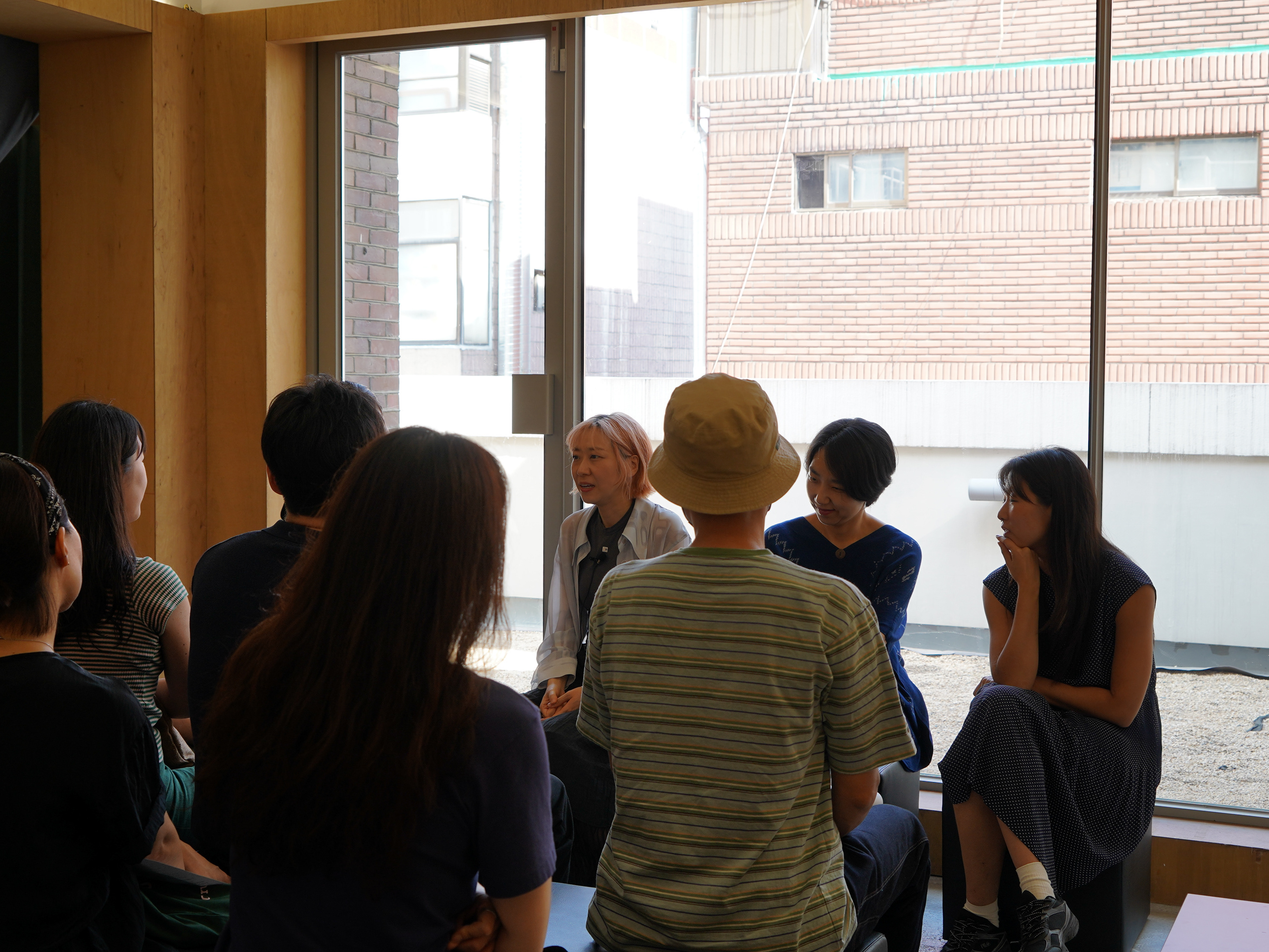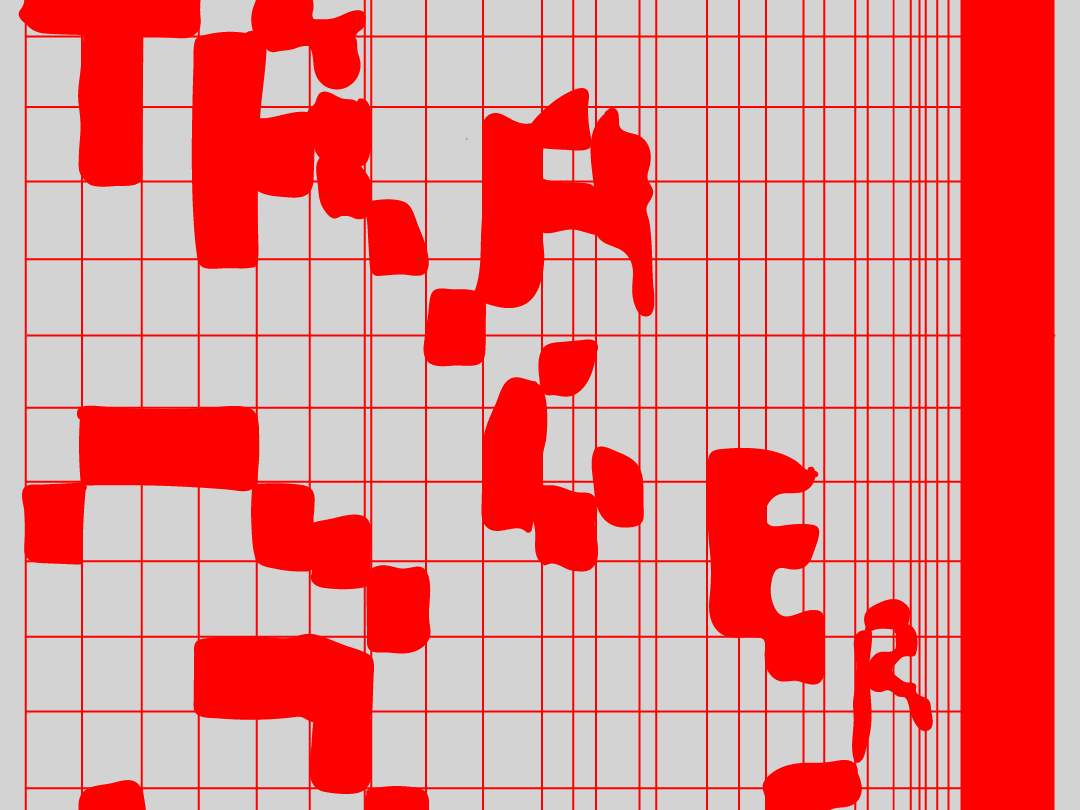Apr. 19 - May 12. 2018
One and J. + 1 Gallery, Seoul, Korea
Participatory performance: Transpixel Movement Workshop, 19 and 21. April
One and J. + 1 Gallery, Seoul, Korea
Participatory performance: Transpixel Movement Workshop, 19 and 21. April
Traversing through the spiraling route, perspiring with a smartphone map in hand, making way to the hilltop One and J.+1 gallery space, one is bound to have an epiphany. While the purpose of my visit was to see Bigo’s preparation for her “Omni-Presence” exhibition, I couldn’t help but think of the moist body in which I inhabit. Bigo’s lens through which she understands the world is to explore the human physique. In Bigo’s understanding, the body is morphed into peculiar pathways, such as being reduced down to an object, and tested as a communicative tool. Inspired by the “embodied mind” from the field of cognitive science, she also examines at where the extension of body lies. For example, Bigo establishes her own idea of archetypical body sizes and claims a norm. Throughout this process, the helplessness and absurdity of the standard body sizes collected and issued by the government and medical institutions in numerous countries becomes personal. Bigo is not afraid to seek the appropriate material for her research, which she confidently translates into various mediums—drawings, performance, video, and printed matter. In her body of work, I witness the warm-blooded flesh transform into a crisp, cold artwork.
After completing her communication design degree in Toulouse, France and a period of holding a fuIl-time job as a graphic designer in Korea, it was only then Bigo dedicated her time of studio practice at the two-year program at the RAT School of ART in 2016. When we met, Bigo was working on a set of figurative line drawings concerned with science, arts and religion which she made during her tight schedule between sustaining high level of thinking and artistic production whilst working in Seoul. Bigo’s pencil drawings on a modest sketchbook at that time featured dislocated arms and legs resembling a type of furniture or abstract sculpture. These cartoon-like drawings revealed Bigo’s strong attraction towards bodily form.
With these drawings acting as a blueprint, in 2016 Bigo’s practice expanded into performance and sculpture with the work called tOOOOOrso (2016), an interactive work where visitors’ push body parts into the preset measurements. The work consisted of two different Korean standard paper sizes and Bigo’s measurement of fictional archetypical body size. Paper 4 Jul* (394*545mm) houses cross-sectional shape of head and shoulder while 8 Jul (273*394mm) contains arm and leg. While the recording of the artist’s instructions plays aloud, the participants are asked to hold the paper and penetrate their directed body parts through perforated shapes. This experience explored objectivity and a direct experience of amputation. Bigo was able to interact with two groups of audience at the RAT Lab in the same year and also during her solo exhibit at Centre A in Vancouver in 2017.
Another project, Draw With A Mirror (2017) expands on the artist’s previous project. The body is once again manipulated into a different materiality as round mirror sculptures extend from the outlines of the artist’s external body parts. In an accompanying two-channel video, Bigo and a professional dancer trace each other using these wearable structures. Glimmers and snippets of reflections flicker across the mirrors as the performer initiates improvised motions from a set of instructions. Resembling a drawing in space, this match-point not only conveys a co-existence of control and power, but also envisions an exclusive communication that relies solely on the body parts.
Another amputated body part appears in an artist book titled How To Serially Section A Body (2017). This particular book explores how three-dimensional bodies are flattened into digitized information. Along with text, typography, graphics and forms, the artist book represent a practice undertaken by the “Visible Korean Project”** from the Korea Institute of Science and Technology Information (KISTI). This project, intended for medical purposes, holds a detailed log of every procedure in the institution, from the freezing of corpses to the cremation of deceased specimen. KISTI also collects cross-sectional images from 0.2mm below the surface of the human body. The artist book illustrates this 0.2mm width with the thickness of a sheet of paper. The book offers a similar unnerving experience of scrolling through the digitized image of a body that was made for public viewing, with each page illustrating different stages of objectification.
Living in a world of such displaced body parts floating in cyber space, we must note another wandering species: the touch gestures left behind on mobile device touch screens. These gestures are the inspiration for the most recent series of sculptures, “Gesture Born Yesterday” (2018), which gives these floating movements a physical form, often larger than a finger or even a human body. Movements including scrolling, tapping and swiping suggest different speeds, volumes and resonances once visualized. For example, a grey ring-shaped Continuous Heart (2018) that originates from an indication of an approval—creating a heart by double tapping—becomes an unknown language in the form of a sculpture. Alongside, an instruction-based performance TransPixel Movement Workshop (2018) presents an imaginary world where the audience is allowed to envision gestures inside a cyberspace. This participatory performance directs the audience to visualize a tiny 44-pixel unit enlarged to 44 centimeters. The square represented by the screen, the audience stands above, guided to scroll, tap, or even double-heart using their fingers, arms, and their whole body. Taking place on the rooftop of the gallery space, the workshop functions somewhat like a group yoga session, providing another way that bodily forms can be employed in a new communication language.
*measuring unit in Korean Standard Paper Size.
** http://vkh3.kisti.re.kr/
** http://vkh3.kisti.re.kr/
Mijoo Park
Translated and edited by Ye Eun Nam
Translated and edited by Ye Eun Nam
Organized by RAT school of ART
Curator: Mijoo Park
Translation and editing: Ye Eun Nam
Translation Supervision: Amy Kahng
Collaboration: Seoul Science Center, Yunkyung Hur, Soseong Kim
Cinematography, Editing: Soseong Kim
Graphic Design: WORKS
Photo: Ui Rock Lee
Support: Ministry of Culture, Sports and Tourism
Seoul Foundation for Arts and Culture
Korea Arts Management Service, K-Art Sharing
One and J. Gallery
Curator: Mijoo Park
Translation and editing: Ye Eun Nam
Translation Supervision: Amy Kahng
Collaboration: Seoul Science Center, Yunkyung Hur, Soseong Kim
Cinematography, Editing: Soseong Kim
Graphic Design: WORKS
Photo: Ui Rock Lee
Support: Ministry of Culture, Sports and Tourism
Seoul Foundation for Arts and Culture
Korea Arts Management Service, K-Art Sharing
One and J. Gallery









